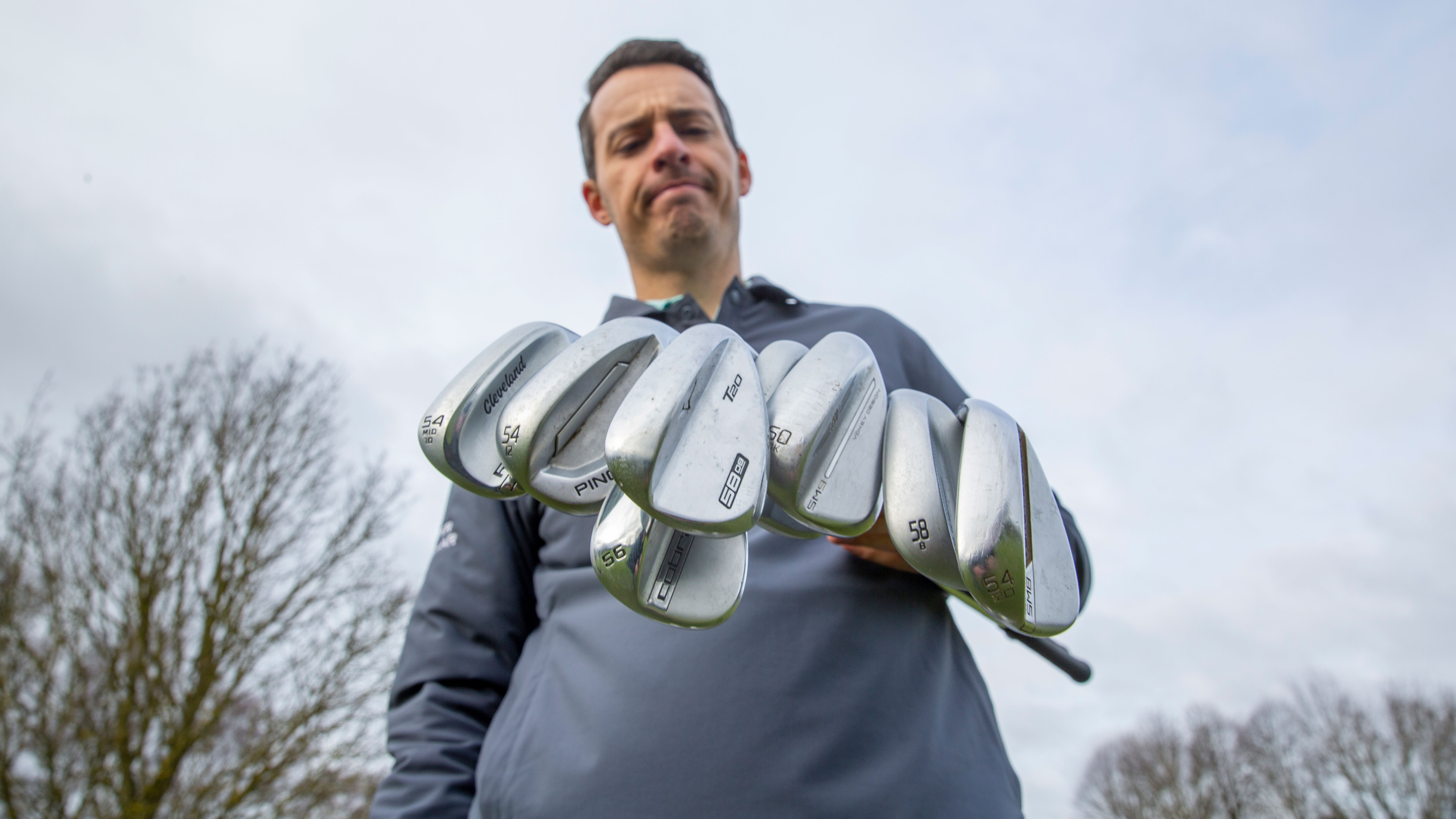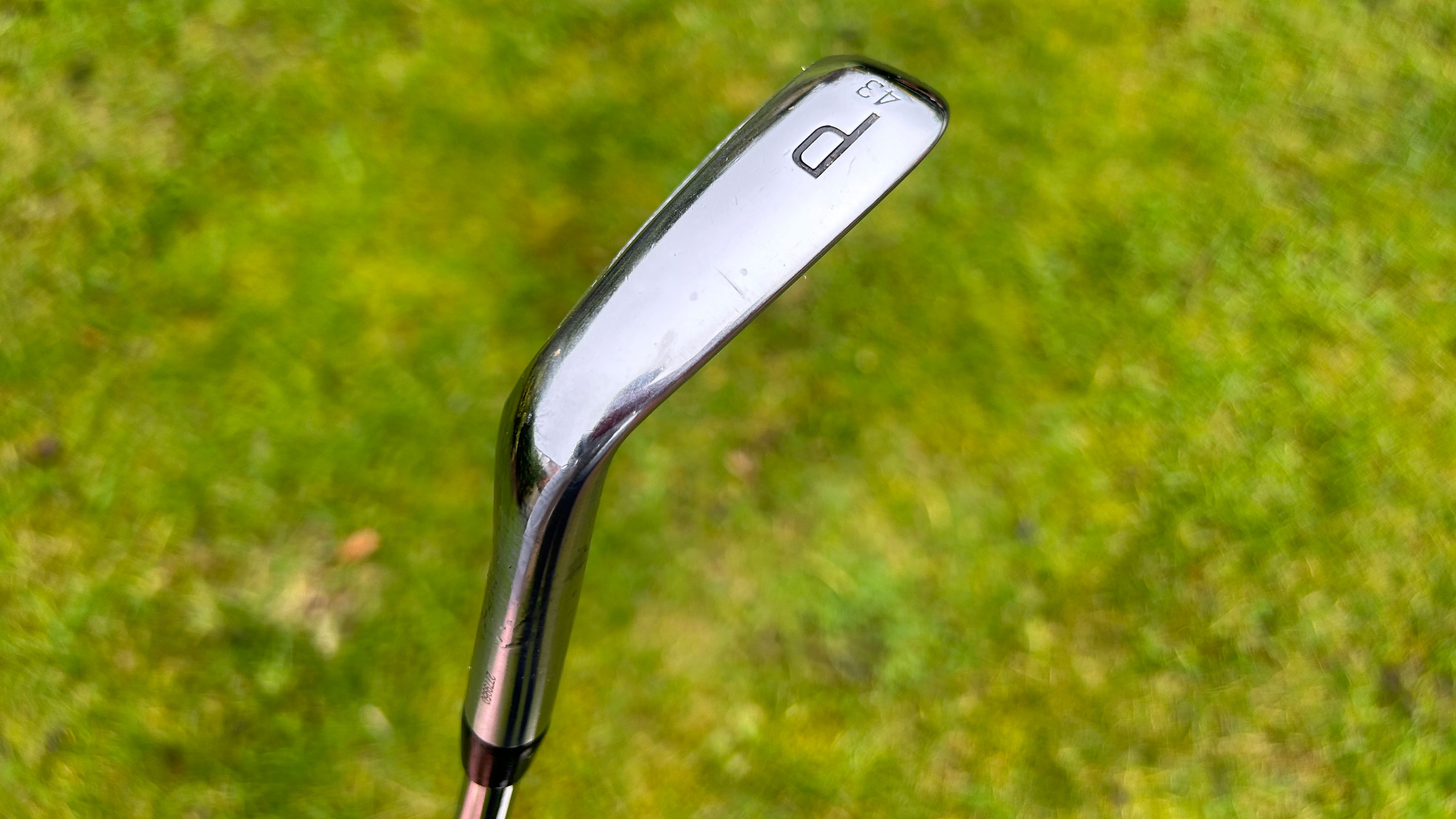What Is The Difference Between A PW, AW, GW, SW And LW?
Your scoring clubs often have letters stamped on the soles. Here's what they mean and how each wedge differs...


If you’re new to golf, or if you just play the occasional round, getting your head around all the different types of individual clubs - the 14 that you’re allowed to play in a competition - can take a little time to get the hang of.
At the 'top end' of the bag, you have your woods - the driver (also known as the ‘big stick’), as well as your fairway woods and hybrids. These clubs are designed to hit the ball further. Straightforward enough.
It’s at the 'bottom end' of the bag where it can get a little confusing. What’s with all the different letters on the soles of the clubs? These will be the golf wedges, otherwise known as your 'scoring clubs' - and there are a number of different types.
Types of wedges
Pitching wedge
‘PW’ (or just ‘P' or 'W') stands for ‘Pitching Wedge’. Typically, the loft of the pitching wedge will be somewhere between 43° to 48°.
Golfers use a pitching wedge when they are playing the longest wedge shots, although they can also be used effectively to play pitch-and-run shots; they’ll come out lower than a 58° wedge and with a little less spin.
If you buy a standard set irons, a pitching wedge is normally part of the set. It's up to you how many wedges you carry, and very much a personal choice depending on the type of game you play and what shots you feel confident with.
Subscribe to the Golf Monthly newsletter to stay up to date with all the latest tour news, equipment news, reviews, head-to-heads and buyer’s guides from our team of experienced experts.
The loft of the pitching wedge varies between different manufacturers (although it's usually within this 43° to 48° bracket). It's important that you know what the loft is. If and when you add other wedges to your bag, you don’t want the loft to be the same. Two clubs performing the same task is a waste of one of the 14 clubs that you're allowed to carry.

This pitching wedge has the loft (43°) stamped on the sole of the club
Sand wedge
‘SW’ (or just ‘S’) stands for ‘Sand Wedge’. This club has more loft than a pitching wedge, typically somewhere between 54° to 58°. As the name would suggest, it’s generally a club that gets used to escape bunkers. Sand wedges will tend to have a wider, more-rounded sole, which allows it to slide under the sand and pop the ball out.
As well as bunker shots, sand wedges can also be used to play standard wedge shots from short range. Because they have more loft than a pitching wedge, they won’t go as far. Lots of teaching professionals actually recommend that mid to high handicappers don’t play full shots with a sand wedge, as it can bring a lot of faults into play.
Gap wedge (approach/attack/utility wedge)
‘GW’ (or just ‘G’) stands for ‘Gap Wedge’. This club is also known as an ‘Attack Wedge’ or ‘Approach Wedge’, and will sometimes just have an ‘A’ stamped on the sole of the club, or even a ‘U’, which stands for ‘Utility’, due to being able to perform several functions. The gap wedge, as the name would suggest, fills the gap - something you don’t want to have, which makes it a crucial club.
Let’s say you have a pitching wedge that has 46° of loft and goes 130 yards, and you have a sand wedge with 54° of loft that goes 80 yards - you have a 50-yard gap. The gap wedge has more loft than your pitching wedge - typically somewhere between 50° to 54° - but less than your sand wedge. In this example, you’d ideally want one of the best gap wedges for that distance of around 100-105 yards.

Gap wedges typically have a loft of 50° to 54°
Lob wedge
‘LW’ (or just ‘L’) stands for ‘Lob Wedge’. Think about how you sometimes want to ‘lob’ the ball in the air - that’s send it up high, a flop shot that Phil Mickelson is well known for playing, which sees the ball land softly with little roll.
To execute such a shot - let’s say you're short-sided behind a bunker - you’ll want a club with lots of loft to get the necessary height and soft landing. The best lob wedges will typically have 58° to 64° of loft.

A 60° lob wedge is a useful club to have in the bag for flop shots
FAQS
Do all wedges have letters on?
Not all wedges have letters on the sole of the club. Whilst pitching wedges and sand wedges do, often the gap wedges and lob wedges just have the loft stamped on the bottom. Wedges will often have another number stamped on the club, too - bounce.
What is bounce on wedges?
All golf clubs have bounce. However, it is most important on wedges. The bounce will be the smaller number on the sole (the other being loft) - no more than 14 and no less than 4. As with loft, the bounce number is a degree.
The degree of the bounce is calculated by laying the sole of the club on the ground and determining how much higher the leading edge of the club is in relation to the sole’s contact point on the ground. For example, if the leading edge is high off the ground, the wedge has high bounce (typically 12° to 14°); if the leading edge sits low to the ground, the wedge has low bounce (usually 4° to 6°).

Michael has been with Golf Monthly since 2008. A multimedia journalist, he has also worked for The Football Association, where he created content to support the England football team, The FA Cup, London 2012, and FA Women's Super League. As content editor at Foremost Golf, Michael worked closely with golf's biggest equipment manufacturers and has developed an in-depth knowledge of this side of the industry. He's a regular contributor, covering instruction, equipment, travel and feature content. Michael has interviewed many of the game's biggest stars, including seven World No.1s, and has attended and reported on numerous Major Championships and Ryder Cups around the world. He's a member of Formby Golf Club in Merseyside, UK.
You must confirm your public display name before commenting
Please logout and then login again, you will then be prompted to enter your display name.